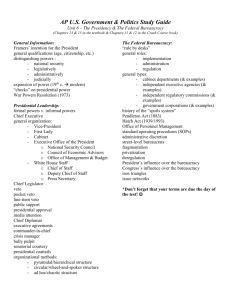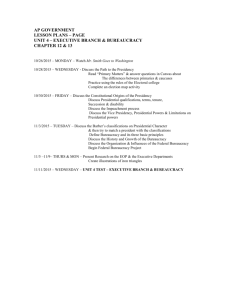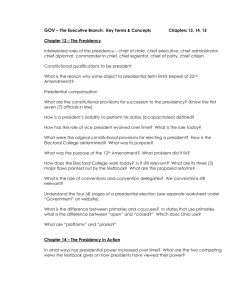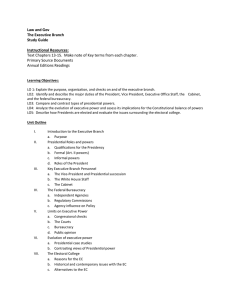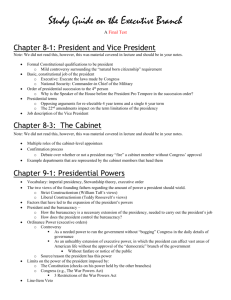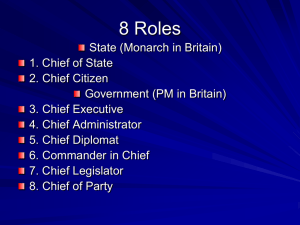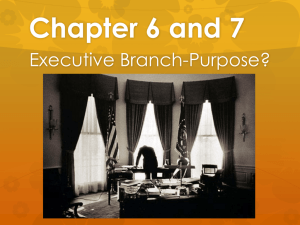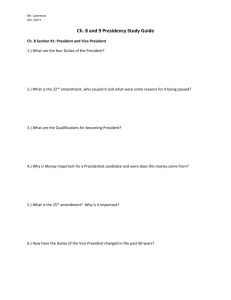0.ExBranch.Terms.Concepts
advertisement
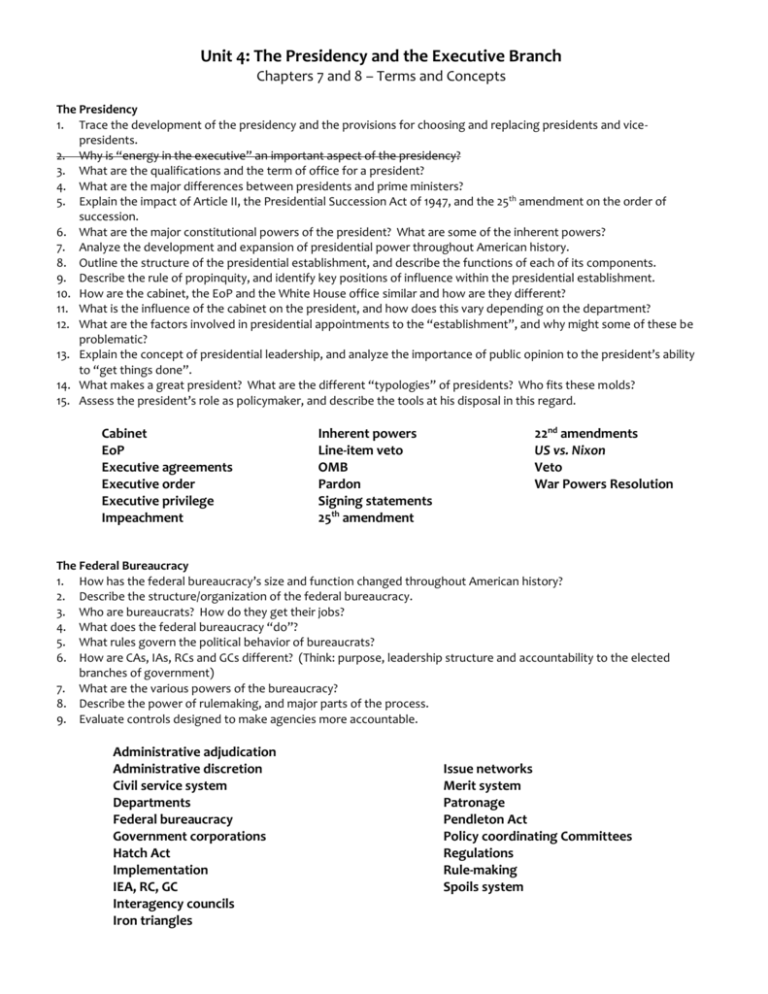
Unit 4: The Presidency and the Executive Branch Chapters 7 and 8 – Terms and Concepts The Presidency 1. Trace the development of the presidency and the provisions for choosing and replacing presidents and vicepresidents. 2. Why is “energy in the executive” an important aspect of the presidency? 3. What are the qualifications and the term of office for a president? 4. What are the major differences between presidents and prime ministers? 5. Explain the impact of Article II, the Presidential Succession Act of 1947, and the 25th amendment on the order of succession. 6. What are the major constitutional powers of the president? What are some of the inherent powers? 7. Analyze the development and expansion of presidential power throughout American history. 8. Outline the structure of the presidential establishment, and describe the functions of each of its components. 9. Describe the rule of propinquity, and identify key positions of influence within the presidential establishment. 10. How are the cabinet, the EoP and the White House office similar and how are they different? 11. What is the influence of the cabinet on the president, and how does this vary depending on the department? 12. What are the factors involved in presidential appointments to the “establishment”, and why might some of these be problematic? 13. Explain the concept of presidential leadership, and analyze the importance of public opinion to the president’s ability to “get things done”. 14. What makes a great president? What are the different “typologies” of presidents? Who fits these molds? 15. Assess the president’s role as policymaker, and describe the tools at his disposal in this regard. Cabinet EoP Executive agreements Executive order Executive privilege Impeachment Inherent powers Line-item veto OMB Pardon Signing statements 25th amendment 22nd amendments US vs. Nixon Veto War Powers Resolution The Federal Bureaucracy 1. How has the federal bureaucracy’s size and function changed throughout American history? 2. Describe the structure/organization of the federal bureaucracy. 3. Who are bureaucrats? How do they get their jobs? 4. What does the federal bureaucracy “do”? 5. What rules govern the political behavior of bureaucrats? 6. How are CAs, IAs, RCs and GCs different? (Think: purpose, leadership structure and accountability to the elected branches of government) 7. What are the various powers of the bureaucracy? 8. Describe the power of rulemaking, and major parts of the process. 9. Evaluate controls designed to make agencies more accountable. Administrative adjudication Administrative discretion Civil service system Departments Federal bureaucracy Government corporations Hatch Act Implementation IEA, RC, GC Interagency councils Iron triangles Issue networks Merit system Patronage Pendleton Act Policy coordinating Committees Regulations Rule-making Spoils system
